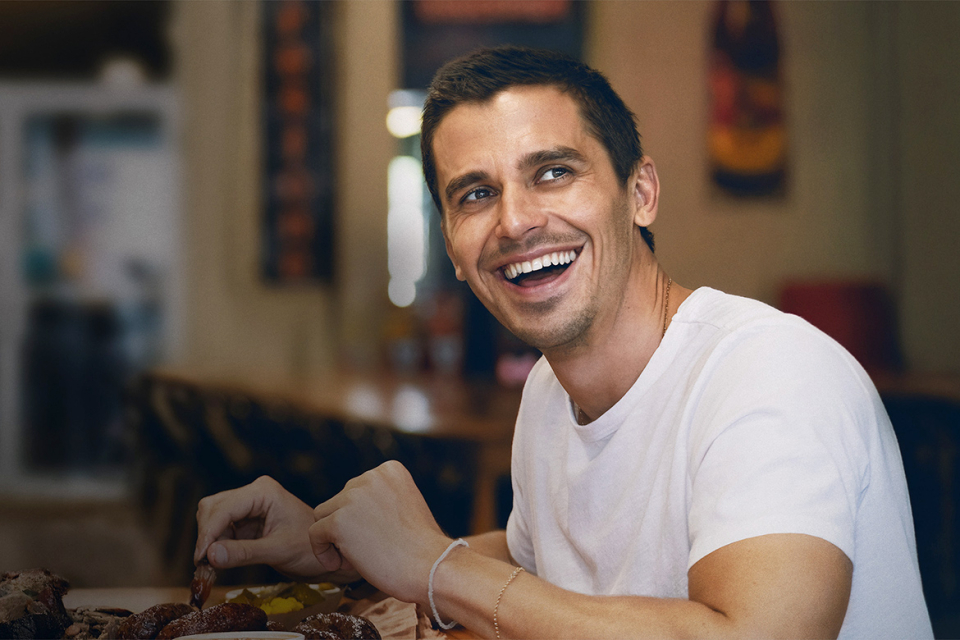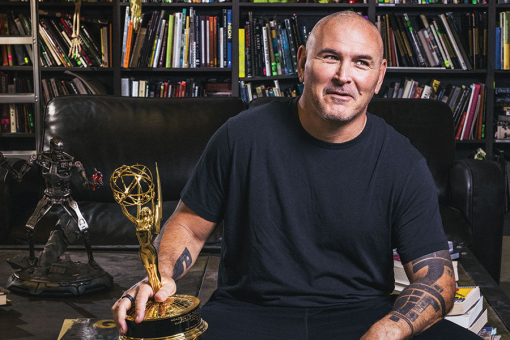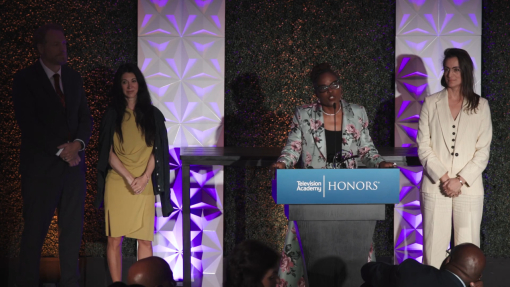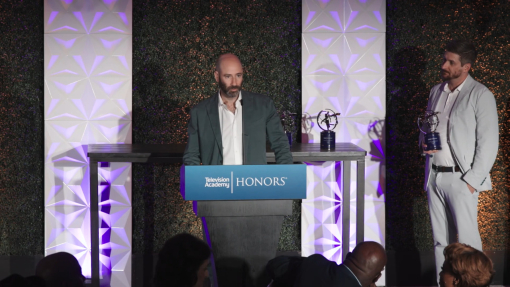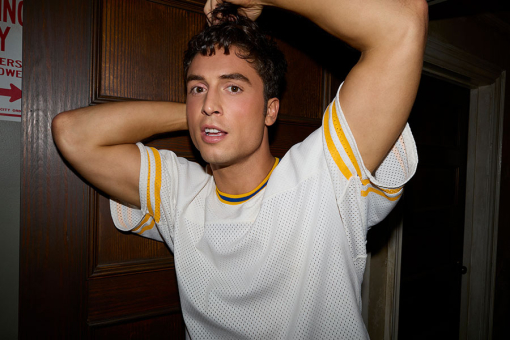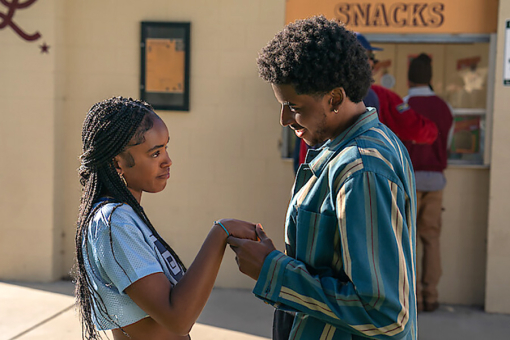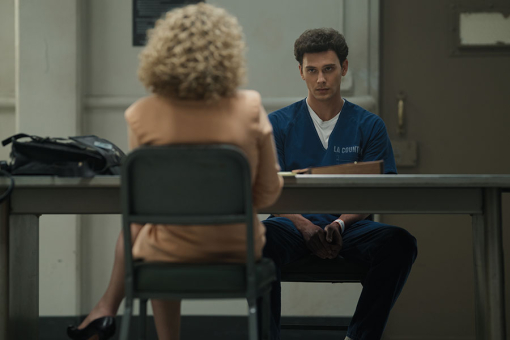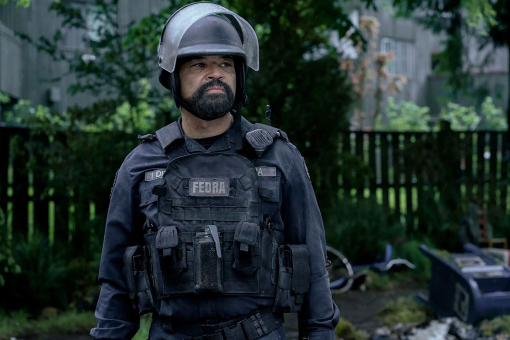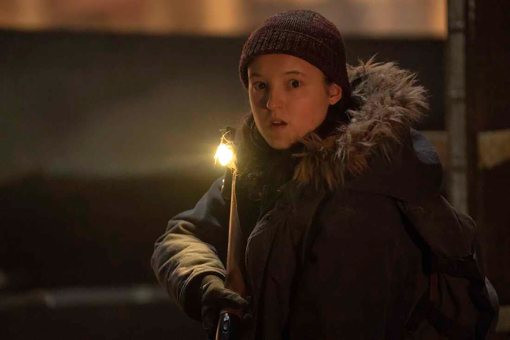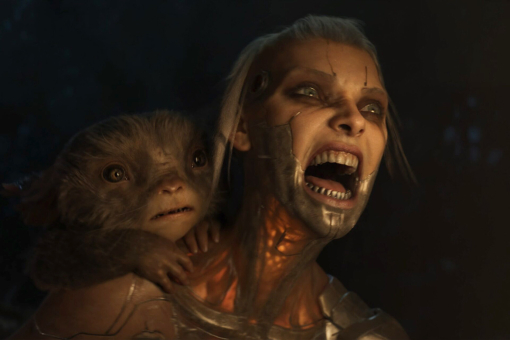Antoni Porowski never set out to be a food and wine expert, but television is better for it.
When Netflix’s Queer Eye cast Porowski in 2017, it got a co-host with a psychology degree from Concordia University, an acting background and a particular interest in telling immigrant stories — given that he was born in Montreal, Canada. (His parents, along with his two sisters, immigrated to Canada).
In 2025, he celebrates the ninth season of Queer Eye — which continues to give civilians live-changing makeovers. He’s also hosting his own show, No Taste Like Home with Antoni Porowski, on National Geographic. No Taste Like Home follows celebrity guests across the globe as they discover their ancestral roots through family recipes. Now, Porowski shares his journey to Hollywood and culinary fame with the Television Academy.
Television Academy: How did you become a food and wine expert?
Antoni Porowski: It definitely wasn’t in the plan. There are a lot of physicians in my family, so there was always a gentle push toward medicine, which just wasn’t in the cards for me. I ended up choosing psychology as my major. I felt like it was a good bridge between the arts and the sciences, always knowing that I wanted to be an actor. I had wanted to be in film since I was a little kid.
When I got my degree, I [thought],”Well, I made my parents happy and now it’s time to pursue my own dreams.” So I moved to New York and studied acting at The Neighborhood Playhouse for two years. I graduated and was basically an out-of-work actor for seven to nine years — auditioning, working in restaurants. I worked as a personal assistant to [the original Queer Eye’s food and wine expert] Ted Allen and then in a gallery.
Did your time with Ted Allen influence you to audition for Queer Eye?
I remember calling him and saying, “Ted, I have this opportunity with Queer Eye.” He said, “Wait. I literally just got out of David Collins’s office.” [Editor’s note: David Collins is the creator of Queer Eye.) I said, “I think I’m auditioning for this thing, and I’m not a chef.” He was like, “I am not a chef. I was a journalist. I didn’t go to culinary school.” He definitely encouraged me to do it.
Never [while] working for Ted did I think I’m going to do what he did. But I was learning about writing about food, developing recipes, writing cookbooks, TED talks, sustainability — all that stuff that he was passionate about. A lot of the things that I had done led me to a place where I was ready for this job that I never knew I wanted.
What experience on Queer Eye has resonated the most with you?
Going back to the very first episode, we have this man — Tom Jackson — in a town outside Atlanta. I remember when I was cutting open an avocado, he kind of looked at it and said, “Oh, what’s that?” I didn’t quite understand at first. Was he asking about the avocado, or the knife technique? Then I recognized that he had never seen the inside of an avocado before. He was asking about the pit. I had an “a-ha” moment. You can never take for granted what someone may or may not know in the kitchen. It set the stage for reminding myself not to make any assumptions — to really meet people where they’re at — which is the ethos of what Queer Eye is.
How flexible are you when working with guests on the episodes?
We have incredible producers on Queer Eye who have a certain story that they think is going to be the direction of the episode. But, sometimes, things change. We had a young man named Ray “Speedy” Walker; he was in a tragic car accident with his mom and his aunt. They both passed, and he was left paralyzed. The plan was, we were going to make rice and beans. So, I’m in the kitchen with him and — out of nowhere — he pivots. He starts asking me about working out, my diet and how many grams of protein [I eat]. I ask him what his favorite foods are and he says he loves hibachi. He used to go to this hibachi place with his mom and his aunt. He asks, “Can you teach me how to make chicken and steak-fried rice?”
So, at that moment, the producers look up hibachi restaurants that are ADA compliant. He had to be at a certain [height], because of his chair, to be able to cook. They found a location. We go, he rolls in and he was visibly more timid. He said, “This is literally the exact same hibachi place that I used to come to with my mom and my aunt before they passed,” which none of us knew. He then said this was exactly what he should be doing, so we made chicken and stead-fried rice, and he was really happy.
In terms of selecting people for makeovers, how much say do you and your colleagues have?
We’ve had very general conversations with ITV, Scout and Netflix, who have always been really good partners — even before we got the titles of executive producers on the show. We’re not involved directly in the casting process, but we’re clear about things. JVN [Jonathan van Ness] wants to be sure we have trans visibility. For me, I’ve always been passionate about the immigrant stories.
How did the idea for No Taste Like Home come about?
I actually had another idea that I was pitching that really didn’t have much to do with what No Taste Like Home is now. I had a meeting with National Geographic and really connected with [executives] Tom McDonald and Courteney Monroe, who run the show there. They mentioned Gordon Ramsay‘s Uncharted, where he travels to places and has physically challenging, culinary adventures. It’s a whole wild thing. I’m down to do anything physical, and [McDonald and Monroe] were like, “Maybe we can throw a celebrity in the mix that you can take on this journey.” It turned into [discovering one’s] family history through the lens of food.
With six episodes, you really traveled around the world.
Since it’s Nat Geo, they love global. We would change from one scene with me herding cattle with James Marsden in San Antonio, Texas, to climbing a mountaintop in Bavaria in clogs that were three sizes too small. That was my big sacrifice for the season, along with jetlag and a couple of mini-heat strokes.
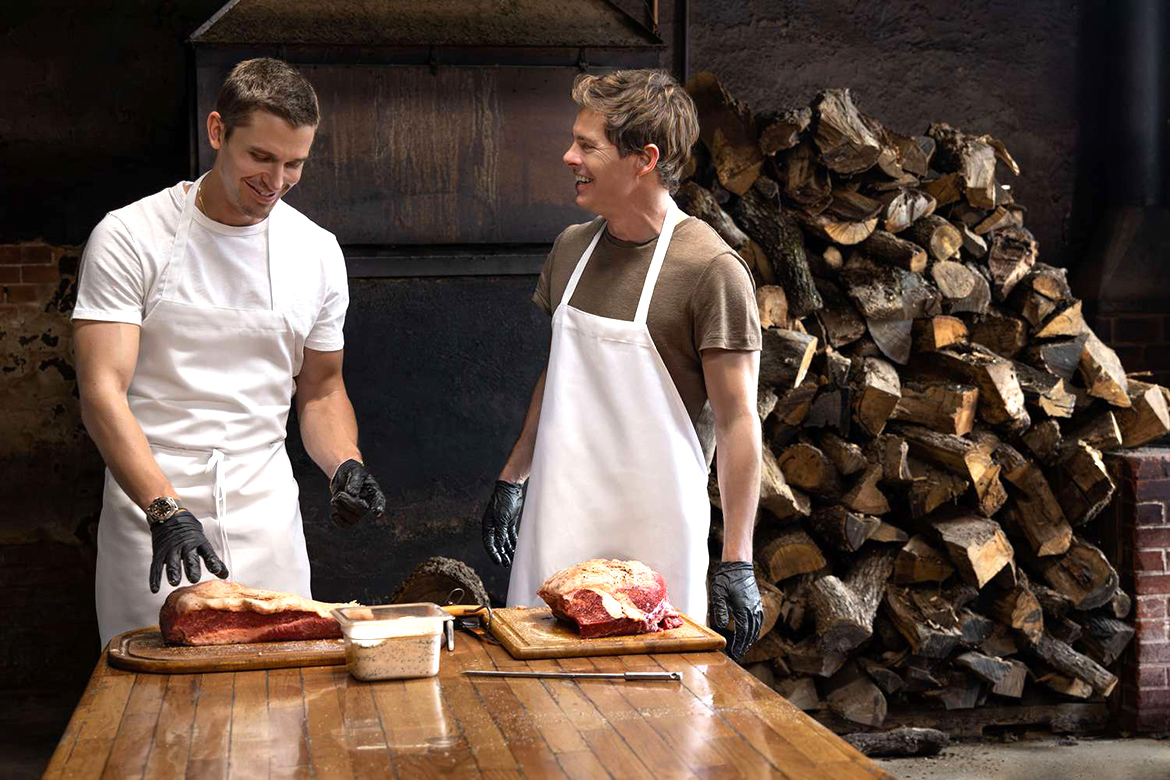 Porowski with James Marsden / Photo: National Geographic
Porowski with James Marsden / Photo: National Geographic
How are the celebrity guests on No Taste Like Home chosen?
I reached out to a lot of people; agents helped out. We had to get permission to do complete genealogical searches on people. Months of research was done for every single episode, which is kind of wild. Queer Eye is basically week-to-week. When you’re in Germany, for example, you can ask any type of public records office for genealogical information and you [can] get it within a few hours. But in Senegal, on the episode with Issa Rae, they don’t have the infrastructure. So, our producers had to fly there and speak to village elders for an oral history. It’s compelling storytelling. It is also a good way to show that all these stories have value. It doesn’t necessarily matter where you’re from.
You’re doing some work with the Equaversity Foundation?
Yeah. The first ever Pride march in Poland was in a city called Bialystok, in 2019. It was a year-and-a-half after Queer Eye came out. A lot of the people marching there had bags of flour or rocks thrown at them. Back when I used to use Twitter, people started tagging me and others with Polish names in these videos. That was the first time I ever had a very specific call to action. These people from my family’s homeland were reaching out, saying: “Please help us. Repost this. Do something.” A bunch of incredible women started this foundation called Equaversity. A lot of donations to help LGBT+ organizations in Central and Eastern Europe were being kaboshed, so it meant figuring out ways to bypass that. My role was more forward-facing, with visibility and amplifying them through social media.
How have your experiences on the two shows impacted, or changed, your profession?
I was definitely in the lane of food with Queer Eye, so whether it’s public speaking or endorsements, it’s been very food-centric — until No Taste Like Home. While that’s still a big part of the business and my day-to-day now, it’s opened up the conversation. I’m a little more involved in tourism boards, hotels, travel and experiences — which is fun, because it enables me to switch things up a little bit.
Not everyone can go to their country of origin with a team of researchers. But we can have conversations with people in our own families. The next timey you’re at a family function — go talk to someone who’s older than you, who’s lived through some stuff, immigrated from another country. Ask them what it was like growing up, the type of food they had. There’s a story behind every single thing that we consume — whether it’s street food or a celebrated family dish. It teaches us so much about why we are the way we are. It makes us better people and it makes us more open to really embracing other cultures and other ways of thinking. I would encourage other people to go on their own journey of No Taste Like Home — after watching all six of our episodes, naturally.
This article has been edited for length and clarity.
Queer Eye is streaming on Netflix. No Taste Like Home with Antoni Porowski is streaming on Hulu.

